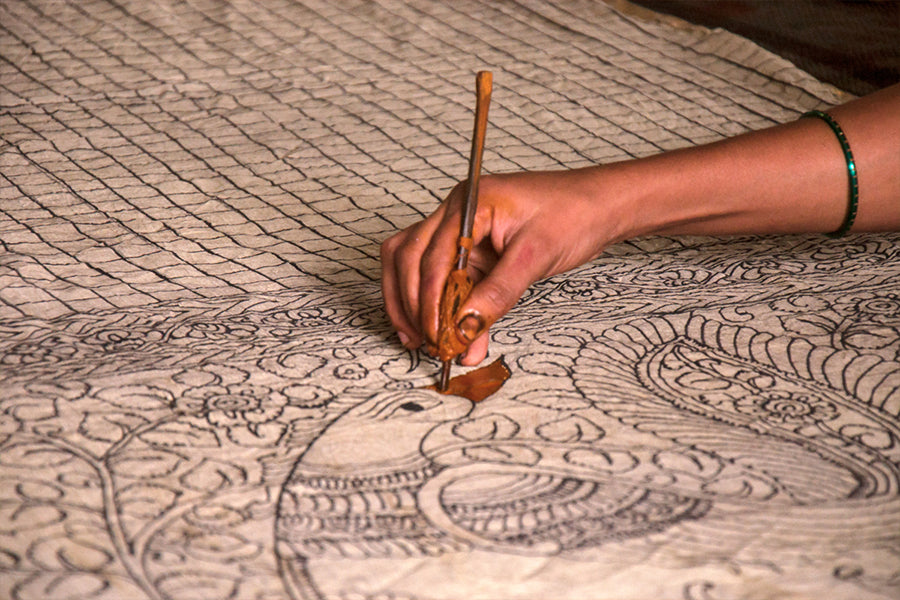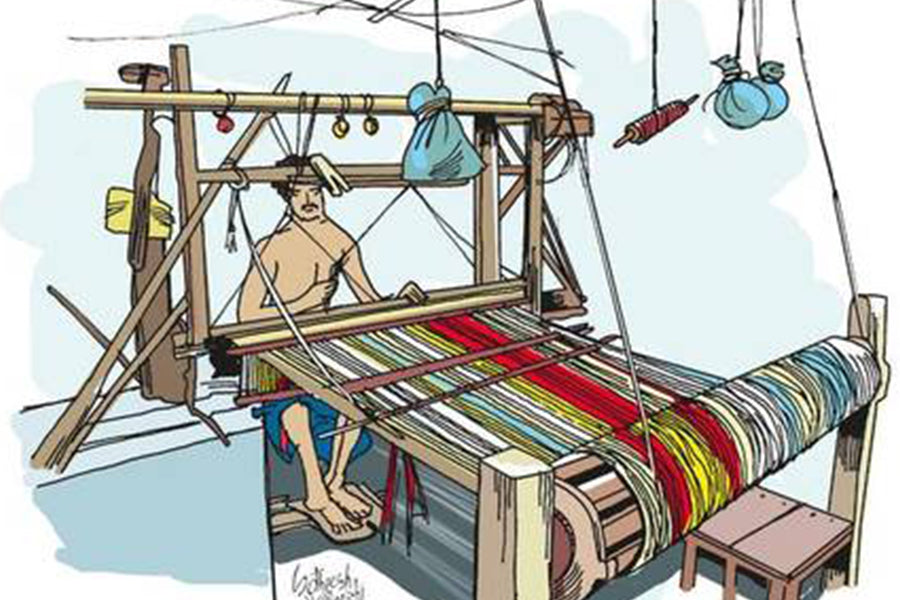Bengal, the golden land of inherited treasures, of art and literature, of beauty and folklores, is widely known for its vibrant hand-woven sarees. Talk about a Mughal princess, and the image of her draped in floral paintings and sculptures, intricately woven in beautiful motifs on the finest muslin cloth, will fill your mind. Known as the Jamdani fabric, which translates to a vase of flowers in Bengali, this traditional weave is a favorite in the ethnic garment industry. A centuries-old weaving tradition evolving from the heart of Bengal, the Jamdani technique, boasts of being the most strenuous and time-consuming form of authentic handloom weaving. The regal fabric sports elaborate motifs hand-woven by brocading while weaving the cotton fabric, hence classifying into a form of loom-embroidery.
Jamdani in days bygone
Decades ago, when one ventured into the outer villages of Dhaka, images of weavers, sitting in trenches dug in the ground, and working away rhythmically on bamboo or tamarind wood looms, welcomed one’s sight. Ranging in color variants of gray, red and white with a yarn count of 200 to 250, the weaves were made of unadulterated natural dyes, extracted from flowers and leaves of creepers. The elaborate and elegant designs exhibited works of art like- ‘tercha’ with flowers sprayed diagonally, ‘butidar’ covering the whole fabric in scattered floral sprays, and the famed ‘jhalar’ sporting a gorgeous network of flowers! The painstaking method made it exclusive and affordable only to the affluent and it still continues to be a royalty in the eyes of the connoisseurs of traditional crafts, who pass it down through their generations, as an heirloom.



Jamdani today
Jamdani weaving, today, has two weavers sitting beside each other at the loom, placing the design to be made on a piece of paper under the warp. However, experienced weavers still prefer to make gorgeous floral patterns from memory. Similar to tapestry, the small shuttles of colorful threads are passed through the weft resulting in a variety of intricate designs on a fine fabric. The cloth is then washed and starched for a crisp, fresh and glossy appearance.
The art perished, until a few years ago, as the talented weavers could barely make ends meet with the meager amount of money earned in comparison to the hard work and time invested. Modern machinery, churning out tons of affordable similar looking fabrics, added to the woes of these artisans, whose children deferred from inheriting their skills, owing to the low wages.
To revive the majestic art, weavers, now, buy fine yarns and use simpler patterns to cater to a wider customer base, alongside adopting a wider array of designs and colors. Hence the Jamdani weave has made a comeback and is a favourite among women who look for class and beauty.
Nothing short of an art, Jamdani weaving has been declared an Intangible Cultural Heritage of Humanity by UNESCO and is witnessing a great revival in Dhaka, Bangladesh and West Bengal, India. Fabrics ranging from Sarees, dress materials, scarves, dupattas etc. are being exported worldwide. More efforts in place will transform this rich craftsmanship into a widely popular and noted weaving technique, giving due applaud and monetary return for the makers, for the sheer talent and patience they exhibit in the making of this royal finesse of a fabric.



